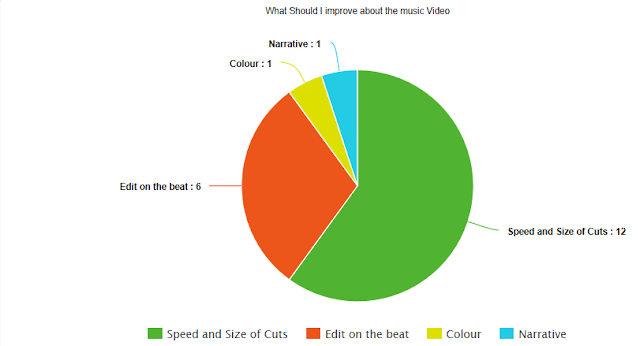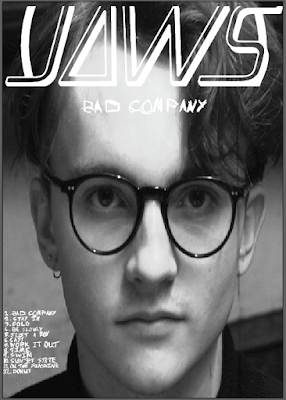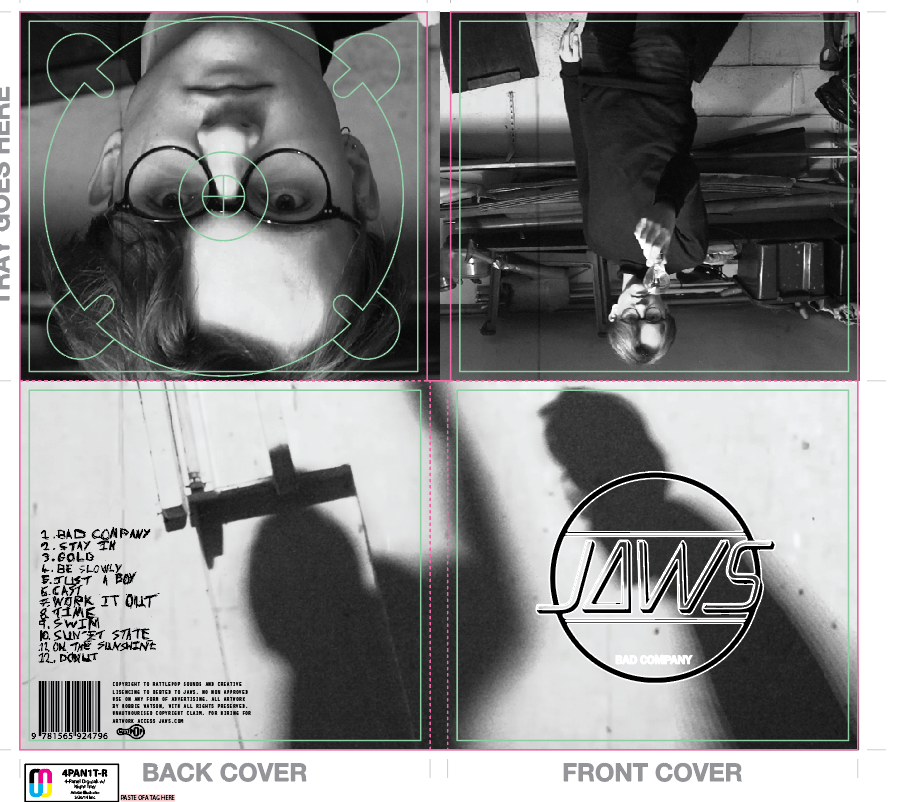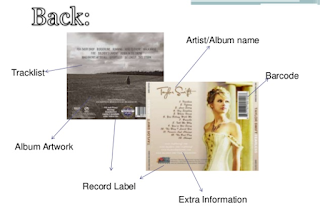"What have you learnt from your audience feedback"
 |
| Small section of an audience feedback blog. |
Utilizing Web 2.0 was an incredibly effective way of gathering feedback
as it is a platform that is used every day by my target audience, meaning, I
was confident that I would gather appropriate responses from the correct people.
In terms of making sure I addressed my demographic, I targeted a selection of
people by going on Facebook and looking at people nearby and choosing people
who fit my target audience of males around the
age of 14-18, who in general are left leaning in political view. From this I formed a private
list of people who could view the post as I sent them the link to my blogger
and all other links needed. I targeted these specific people as they were the demographic
that I believe would more than likely interact with my product if it was in and
around the really market, and based on the feedback I received, I was right to
believe what I previously stated. The shortlist of of my target audience was a
collection of my friends and family and people of impartial beliefs including
the band and the management team for the band themselves. I did this with a
strong intention in mind, as I wanted to see if there were any differences in
the feedback I received from the bias and non-bias participants and how it would
alter the way in which audience members received and interpreted my product. I
found that, from research, there was a consensus on the way the video portrayed
the narrative and mysterious vibe I worked to put across to the audience. I
also found that there were very few differences in how the bias and non-bias
people received all my products.
Initial feedback from my blog was positive even, however there were a
few people who came back with some great constructive criticism which I could
work and to help my project benefit.
Feedback showed that my conscious
thoughts on mis-en-scene, lighting, colouring, narrative and technical elements
(such as artificial camera movements) were brilliant. I also managed to
successfully convey the overall mood and tone of the music video to my
audiences, as they felt “compelled to think” but also “unnerved” and
“intrigued”. In terms of my development of my products, some of my peers and
other participants of the questionnaire suggested that I edit down some of the
camera shots throughout the video, more specifically, making all clips shorter
so they cut on the beat of the song to give a feeling that it is a music video
not just a short film/ film opening appearance. After going back onto Adobe
Premiere pro and amending the problems that were highlighted in my audience
feedback, I noticed that the alteration of the shorter clips impacted the
general spooky and unnerving effective of the video. But, I didn’t completely
ignore their suggestions, I did alter the shots a lot making them much shorter,
however I also made more shots have slow motion while having some just more
extended. So, I did change not the video to the extent that the footage was
edited to lose the desired unnerving fashion I looked for. This can be scene by watching through each of my Rough Cuts where you can see the size of each clip getting smaller through each one all the way to the final cut.
As well as altering the length of some of the shots and there duration,
a couple members of my audience and participants of the survey suggested that I
match the beat of the music to the editing during the whole production. I then
went back to Premiere Pro again as I wanted to make sure I nail the music video
and fully consider and use all suggestions. During using premiere I made sure I
repeatedly looked over the music sequence and clips in order to get shots that
transition on the beat. I found that it worked extremely well, emphasizing the
element of cohesion and continuity within the visuals. I chopped the visual
footage so that it joined with the bars that were evident within the music
levels, so that every time a “beat dropped”, there would be a visual cut within
the footage.
After completing my alterations to the video, I then reposted the music
video link on my blog and asked my friends and peers and everyone else who last
did the questionnaire if the rough cut looked better than previous. I was happy
to see that nearly all of them agreed with the alterations that I made and said
it added to the music video and really enhanced the cohesion and continuity of
the video. Although, there was a friend that challenged my decision not to
dramatically edit down video, as it caused it to rush through the narrative.
But I quickly justified my reasoning, which she seemed to accept. As I
explained later in the process I would be adding in inter titles that would
further help entrench the narrative providing a recommended reading. Overall,
it seems that the alterations that I made based the opinions of my audience
demographic, worked extremely well and I achieved exactly what I wanted to
creatively, whilst also fulfilling my intentions, this however had to be done
with compromise.
As previously mentioned, that I took to blogger to design a
questionnaire that was suitable and simple for my audience demographic to
answer effectively as they would understand it. When designing the
questionnaire, I knew that I wanted qualitative and quantitative data, as I
wanted to gather statistics, as well as written opinions. This method of having
both types of data is called triangulation.
Because I must evaluate the entire product package, I decided to include
a variety of open and closed questions – some of which required the audience
member to provide a number on a scale of how successful my products were as a
whole and some of which required them to provide a reason for their answer. I
was happy to see that all the written responses were positive, with key effect
being in the simplicity of my products. As the questions on the questionnaire were
appropriate as I didn’t want people to feel overwhelmed with outlandish
questions and distracting fonts.
As I mentioned before, I wanted to investigate if not being one of my
friends and family or acquaintances influenced the way in which my audience
developed an understanding of my music video and other ancillary products. But
if I looked at the feedback gathered form the survey and individual responses I
received in person, there was no noticeable correlation on the way in which
they interpreted or felt about certain micro-elements on my ancillary products
or music video.
I found that the majority of people watched watched my production tended
to be watched by predominantly by people are in between the 14-22 year old
mark, who were mostly male. This fits with my target audience as I intended
meaning all of the data I received is perfect for me. Most the responses were
positive saying all the right things. With just a few suggestions for
alterations which I talked about earlier.
I was happy with the range of responses I received. This is because I managed
to get people from all ages to replies to my emails. I took care in who I
choose to go on my list to send the links to, by doing this I choose people of
all different ages. From 14-60 because of this big age range I had to not use
the social media page Facebook as not all people of this age use Facebook. Therefore,
I choose to use email as everybody has access to it.
A
multiple-choice question allowed my audience members to choose which element on
the DigiPak design was the most effective, this was done by offering option
like front cover, back cover and fonts. Although 11 members answered that all
elements of the design were effective, 4 people believed that the colour scheme
I used was the most successful element, with 2 people each thinking that the
layout, fonts/text and band logo were the most successful elements. Overall, I
am very happy with the answers I received for this question, as I believe that
the responses echo my success in my Digipak design.
As well as the DigiPak questionnaire I did, I provided the audience with
another multiple-choice question; this time concerning the success of
individual elements on my Magazine Advert. Along with lots of others regarding the other
elements. There seemed to have even more
of a consensus of responses about the elements of the advert, as only 11 people
though that all of the elements were successful on the final design. Following
close behind was the still alone on the advert as well as the fonts used. I am
still extremely happy with my design and I believe that I made a conscious
effort to make the advert relevant to members of my target audience, so
according to my feedback, it seemed to pay off.
It was great to see that all of my audience answered that my all my
products were professional and exiting – which puts across how I have successfully
I was in completing my intentions of creating captivating and engaging set of
products. Again, it is clear from feedback that 100% of my audience thought
that my products successfully represented the band. I know this because I emailed
all my products to the band themselves as they wanted to see them to ensure
there were no copyright issues. And they replied that they thought all my products
“looked great”.
As with all films and media texts, there are subliminal or more obvious
messages that are woven into assorted products for audiences to decipher and
interpret. The overarching, dominant message that I wanted audiences to
interpret from my music video was that. The protagonist was lonely and as the
song goes on goings through the planning and construction process of making his
company with it all resulting in the new monster he has made killing him, with
the general appearance of a old silent film. This fits with Stuart Hall, the
audience can decide which reading to give a media text – either dominant,
oppositional or negotiated. However, I believe that my audience members have
received the dominant message that I was trying to portray throughout all my
range of products.
My products relate to the Uses and Gratifications Theory through
different audience interpretations of the messages that I have put into my
products. On one hand, the audience fulfills the objective of being unnerved
and entertainment, as they watch my music video, they should feel fully amerced
in the storyline and feel that they are having their emotions played with.
When it
comes to my ancillary products, audiences should take entertainment when it
comes to viewing the products that being both the DigiPak and Magazine advert;
as of the colours, overall design and fonts may excite them and encourage them
to form a reading, whether dominant, oppositional or negotiated.
In conclusion I believe that my audience feedback on all my
products has helped develop them fully ensuring the success of my product.














































 The front of DigiPaks tend to have a large eye-catching picture on the. The picture illustrated on the front panels tend to have some relation to the songs or artist this obviously varies between music artists as of the genre. The song/album title is also found on the front panel. This is all displayed by the picture we see to the right.
The front of DigiPaks tend to have a large eye-catching picture on the. The picture illustrated on the front panels tend to have some relation to the songs or artist this obviously varies between music artists as of the genre. The song/album title is also found on the front panel. This is all displayed by the picture we see to the right. 

